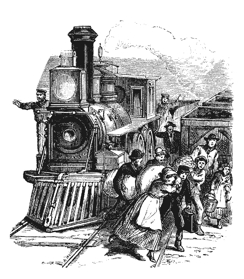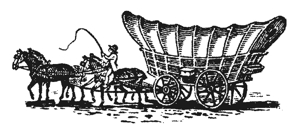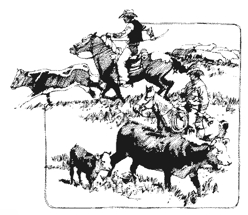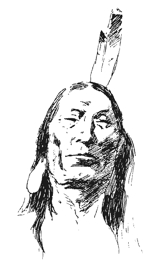|
Review Quiz for
Unit 2 - Westward Expansion
Frameworks for America's Past Directions:
Take this short quiz on your own or with your class.
Click on the link at the bottom of the page to check your answers!  1. Technological
advances
that were important in the
early settlement of the West included
all of the
following EXCEPT: 1. Technological
advances
that were important in the
early settlement of the West included
all of the
following EXCEPT: a. barbed wire
b. steel plow c. water pumping windmill d. electric light bulb 2. What was the name of the law passed in 1862 that offered free land in the West to people who would go and settle there? a. Open Lands
b. Homestead Act c. Settlement Law d. 14th Amendment  3. Houses made of _________
were an adaptation many settlers used
when they first arrived at their farmland on the Great Plains. 3. Houses made of _________
were an adaptation many settlers used
when they first arrived at their farmland on the Great Plains.a. metal
b. leather c. wheat stalks d. sod 4. Which of the following is NOT one of the physical features of the Great Plains? a. dust storms
b. frequent heavy rain c. mostly flat land d. few trees 5. One way that farmers adapted to the environment of the Great Plains was to select __________ as their main crop. a. tobacco
b. potatoes c. wheat d. fruit trees 6. Were there African Americans among the early settlers of the Great Plains? a. Yes, many
African Americans freed from slavery saw it as a place to
go and make a new beginning.
b. No, African Americans were not among the settlers in the Great Plains.  7. Where in the West did the
beef cattle raising
business grow
most rapidly in the decades after the Civil War? 7. Where in the West did the
beef cattle raising
business grow
most rapidly in the decades after the Civil War?a. Texas
b. North Dakota c. Nevada d. Oregon 8. Indians on the Great Plains were most dependent on which animal for food, shelter, and clothing? a. cow
b. buffalo c. sheep d. prairie dog 9. The Native Americans (Indians) of the West were forced onto reservations by the U.S. government mainly a. to make more
land available for settlers moving into the West.
b. to keep Indian tribes from attacking other tribes. c. to protect the buffalo herds that still roamed the West in large numbers. d. to save the Indians' tribal way of life. 10. A Sioux Indian leader in the fight that killed Col. George Custer and all his soldiers at the Battle of Little Bighorn in Montana was a. Geronimo.
b. Chief Joseph. c. Sitting Bull. 11. The famous Apache Indian who fought against settlers and U.S. soldiers in the Southwest region was a. Geronimo.
b. Chief Joseph. c. Sitting Bull. 12. The famous words, “From where the sun now stands I will fight no more forever” were spoken by the Nez Perce Indian leader named a. Geronimo.
b. Chief Joseph. c. Sitting Bull. 13. What happened at the Battle of Wounded Knee? a. A group of
Sioux Indians defeated soldiers that surrounded
them.
b. It ended before anyone was killed. c. Many Indians there were massacred (killed) by soldiers.  14. In the 1880s
the federal government passed the
Dawes Act to
encourage Indians to
assimilate. That means government leaders wanted Indians to 14. In the 1880s
the federal government passed the
Dawes Act to
encourage Indians to
assimilate. That means government leaders wanted Indians toa. leave their
tribe and ways of life, and adopt American
ways of life.
b. leave America and go to Canada. c. keep their traditional Indian customs and lifestyle. d. follow the buffalo herds to hunt on the Great Plains. 15. Indians not already U.S. citizens by a treaty with their tribe were all declared to be full U.S. citizens in the year a. 1865.
b. 1890. c. 1924. d. 1965.
Copyright 2010, 2019 by David Burns All Rights Reserved www.fasttrackteaching.com/ffap |
|
Copyright Notice
Copyright 2019 by David Burns. All rights reserved. As a guide to the Virginia Standards of Learning, some pages necessarily include phrases or sentences from that document, which is available online from the Virginia Department of Education. The author's copyright extends to the original text and graphics, unique design and layout, and related material. |